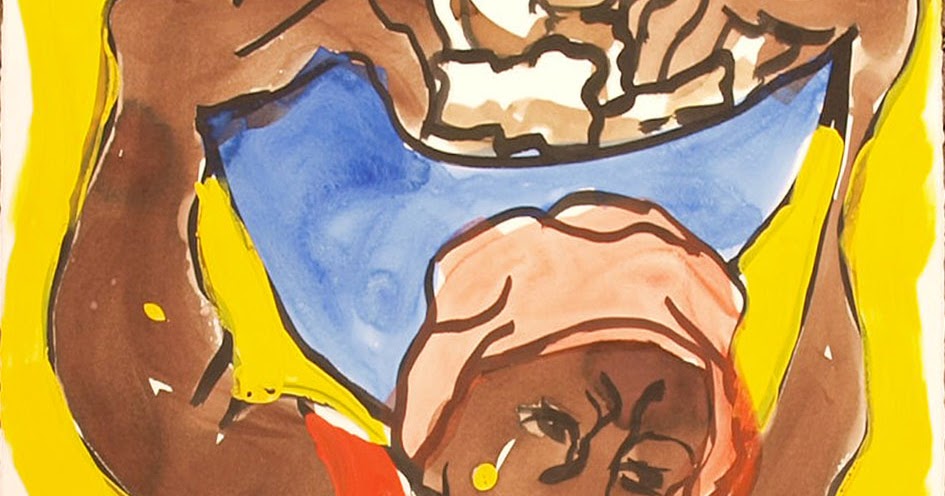Advertisements
gift from Mrs. Ray Ingram
Nostalgic scenes of peace, plenty, and unity with nature tend to involve individuals, not larger social groups. Humanity — contemporary, non-native humanity — suggests this program, it does not go down to the river to pray. Instead, as a collective, people plunder what is precious, beautiful, and necessary in the short-sighted pursuit of pleasures, or as a result of insufficient technologies.


Photographer, David Maisel's disturbing and disorienting “The Lake Project 22” is part of a series about the environmental effects of huge water diversion projects in the West. [David Maisel, The Lake Project 22 (from the series, 2002, chromogenic print, gift of Joe and Pamela Bonino (c) David Maisel]. The image itself is beautiful — the reds with touches of blue; the idea of a blood vessel running through what otherwise appears to be roots, sand and other features of the landscape. The mix of colors, textures and colors is intriguing, but when connected to the word “Lake, then the strangely beautiful becomes wonderfully terrible – the sinister site of a calamity or death that we would not expect to find in nature. Do we see this from afar, or up close? Either way, we hesitate to know.
Reflections in the water is rich in Native American art and artifacts. This is to be expected, as the Palm Springs Museum is rich in collections from the American West and its cultures. [Installation photo by author.] In several examples of native art, I saw acceptance of the enduring facts of desert life that lacked the cycle of aspirational technologies and eventual dispossession resulting from Eurocentric attempts to modify and control nature.
Most of the Native American artwork in the exhibition is contemporary, although to the uneducated they appear to be from the 19th century or earlier. Aren't clay pots always found at archaeological sites? Weren't Navajo rugs made for white trading posts that grew up along train routes, using the materials that East Coast merchants imported for them to lay down?
I was impressed by the scale of the Native American artifacts. The vessels for collecting water at the source were small bottles and jars, all decorated with symbolic art and made with natural materials available on the lands occupied by the tribe. In the window pictured below, a ceramic water bottle is in the foreground. To your left is a large basket, the magnificent “Rain Eagle Basket”, with its interior decorated with two mirrored eagles, with open wings. It is made from sumac, reeds and deer grass, and its function is also to collect water.
A native weaving [Navajo Crystal Storm Rug, ca. 1940] and suspended sculpture that incorporates symbols from various tribes [by non-Native OEL Graves, 1960] demonstrate the symbolic and spiritual communion with Nature, which contrast with the desire to end it until the end of human life. Engineering.
The rug pattern symbolizes the house at the center, with lightning bolts emanating toward four mountains that define the edges of Navajo territory. Red water beetles swim on the vertical edges, between the mountains. The purpose of the painting is not an invocation, but a reminder of the importance of rain and the power of the storm. Whether water is present or not, it is portrayed as an ever-present force in everyday life.
Graves' sculpture pays homage to the rain dance tradition, using symbols such as corn in one hand (a drought-resistant staple crop) and cat tails in the other, as a symbol of wetlands. Native Americans efficiently conserved water with hand-dug irrigation systems and celebrated rains with dances greater than sighs of relief.
In this piece I constructed one of the many possible narratives in this excellent show. I think however you put the experience together, however, it has to be as art about the ecology of the desert and the use of its resources. I found it interesting and inspiring to have such an uncomplicated and beautiful show that brings science and environmental issues to the fore. Water Reflections was chosen by Daniell Cornell, Donna and Cargill MacMillan Jr., Art Director and Curator, Christine Gileswhom I thank for such careful planning and choices.
Reflections on water remains open until May 1, 2016 at the Palm Springs Art Museum.



